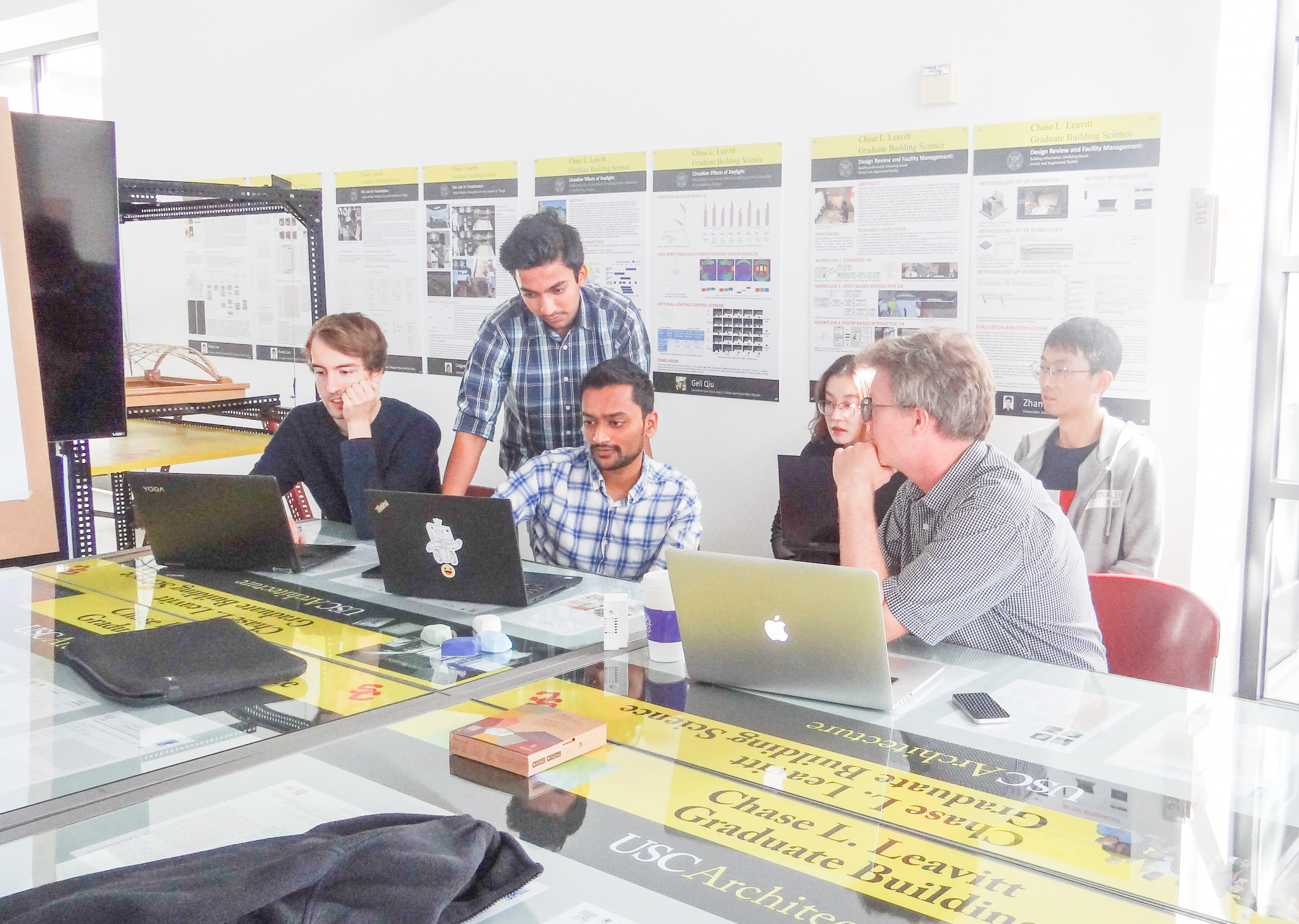Classroom too cold? A group of students might have a fix

(Left to right) Students Simon Blessenohl, Naman Kedia, Vishal Rahane, Danyang Zhang and Zhengao Dong and professor Kyle Konis helped develop TrojanSense. (Dimple Sarnaaik | Daily Trojan)
Sometimes, temperatures in USC buildings can be too low. That’s why Kyle Konis, an assistant professor of architecture, worked with seven students to develop TrojanSense, an app that allows users to recommend temperature changes in buildings by using a virtual thermostat.
Supported by the Green Engagement Fund, the team worked to decrease the amount of energy wasted by the amount of air conditioning used on campus.
“The app basically gives students, faculty and everyone on campus a voice,” said Naman Kedia, a sophomore majoring in computer science and iOS developer for TrojanSense. “They’re able to say ‘Hey, this room is too cold, so I want it two degrees hotter.’ Before, there was no mechanism of doing that, so if you were cold, you would just have to deal with it.”
According to the UC Berkeley’s Center for the Built Environment Setpoint Savings Calculator, a two-degree increase in room temperatures in Los Angeles would save 32 percent of energy in heating, ventilation and air conditioning.
“We have essentially a city within a city here at USC,” Konis said. “[USC] can be a test bed, not just for developing sensors and technology, but also starting to learn how to engage better with the actual users of the campus.”
Since a large portion of USC’s electricity usage comes from air conditioning, Konis said the results of the temperature suggestions made by users will be reported to USC Facilities Management Services every semester.
In this effort, the project team hopes that FMS will take the feedback into consideration when evaluating what temperatures each building should be altered to in order to increase comfort and improve sustainability.
Some classrooms have installed beacons to automatically detect which building the user is in while on the app, according to Kedia. However, if the user is not near a beacon, there is a feature on TrojanSense that allows them to manually select the building and room number to recommend a temperature.
So far, Kedia said there is a pattern of people wanting rooms to be warmer, especially in places like Wallis Annenberg Hall lobby.
Konis said his research prior to creating TrojanSense in Fall 2017 led to this student-driven project. He collected feedback and subjective response data from buildings in operation so that researchers could better understand how the buildings performed from the perspective of its occupants.
TrojanSense project manager Simon Blessenohl, a graduate student studying philosophy, said that although the app has already been released, the team plans on making improvements.
“There are a lot of potentials for the development we could do,” Blessenohl said. “Right now, our main concern is outreach. We want to spread the word and see whether people find [the app] useful, whether they want to use it…. Another thing we are working on is to have a nice visualization of the feedback that people are giving. You can imagine a map of the campus and then the buildings with colors depending on if people think they’re too warm or too cold.”
Konis also said that TrojanSense is different from other smart city projects because the app prioritizes engagement and input from the USC community over sophisticated means of surveillance. By collecting app data and submitting it to FMS, Konis hopes TrojanSense will provide evidence that may make University buildings simpler and more environmentally responsive.
“We want users to feel like they have an interface to the building that they are in or interface to the room that they’re in, that they don’t currently have,” Konis said. “Hopefully, students feel like they’re now getting more of a means of actually participating in the temperature management of the space, but also the energy management and the sustainability of the campus.”
